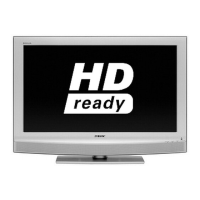
Do you have a question about the Sony Bravia KDL-26U2000 and is the answer not in the manual?
Before operating the TV, please read the "Safety information" section of this manual.
Any functions related to Digital TV (DVB) will only work in countries or areas where DVB-T (MPEG2) digital terrestrial signals are broadcasted.
Lists the remote, batteries, cable holder, and other items included with the TV.
Provides instructions for connecting an aerial and a VCR to the TV.
Instructions on how to bundle and manage cables for a tidy setup.
Safety instructions to prevent the TV from tipping over during use or movement.
Guide on selecting the TV's operating language and country/region.
Steps to automatically scan and store available TV channels.
Guidelines to prevent damage to the mains lead and avoid hazards like fire or shock.
Advice on using appropriate mains sockets to prevent arcing and fire hazards.
Instructions for cleaning the mains plug to maintain insulation integrity.
Warning against connecting too many appliances to a single mains socket.
Recommendation to disconnect the TV from the mains when not in use for extended periods.
Procedures for safely carrying the TV set to prevent injury or damage.
Advice on placing the TV on a stable surface away from heat and moisture.
Ensuring adequate space around the TV for proper air circulation and to prevent overheating.
Safety considerations when installing optional accessories like wall-mount brackets.
Precautions to take regarding the TV, mains lead, and aerial during lightning storms.
Safety measures to take if the TV screen glass breaks due to impact.
Warning about high voltage inside the TV and the need for qualified service personnel.
Advice to keep small accessories out of reach of children.
Recommendations for comfortable viewing distance and angle for the TV screen.
Guidance on adjusting TV volume to avoid disturbing others, especially at night.
Instructions on how to handle and clean the LCD screen without causing damage.
General advice for handling and cleaning the TV set's exterior surfaces.
Information on proper disposal of the TV as electrical and electronic equipment.
Details on the power button for switching the TV on/off and standby mode.
Buttons for changing screen modes and freezing the picture display.
Buttons used for accessing and navigating through the TV's menu system.
Buttons for selecting TV channels and input sources.
Buttons for adjusting the TV's sound volume and muting audio.
Buttons to switch between digital and analogue TV modes.
Buttons for displaying programme information and accessing text services.
Buttons for accessing EPG, changing picture modes, and other special functions.
Description of the MENU button and input selection/OK button on the TV.
Controls for adjusting volume and navigating channels on the TV itself.
Details on the TV's power button and various indicator lights.
Location of the sensor on the TV that receives signals from the remote control.
Instructions on how to switch the TV on from standby mode.
Guide on switching between digital and analogue TV reception modes.
How to select TV channels using the remote control or TV buttons.
How to access and cycle through the Text service options.
How to freeze the current TV picture for better viewing or note-taking.
Instructions for displaying a small picture-in-picture window in PC mode.
How to manually adjust the screen format to suit different broadcasts.
Instructions on how to access and view the Digital Electronic Programme Guide.
How to sort programme information by specific categories.
Steps to set a programme for recording using the timer function.
How to set a reminder for a programme to be displayed automatically.
Procedure for manually setting recording timers for specific programmes.
Instructions on how to cancel previously set programme recordings or reminders.
Guide on how to create and populate your initial favourite channel list.
Steps to add new channels or remove existing ones from your favourite list.
How to delete all channels from your favourite list.
How to access and navigate through the TV's main menu and its options.
Accessing the favourite list for digital channels.
Selecting TV programs from a list of channel labels in analogue mode.
Returning to the last viewed analogue channel.
Returning to the last viewed digital channel.
Launching the Digital Electronic Programme Guide (EPG).
Selecting and labelling external equipment connected to the TV.
Opening the Settings menu for advanced adjustments and configurations.
Selecting picture modes like Vivid, Standard, or Custom.
Adjusting the brightness of the TV's backlight.
Adjusting picture contrast and overall brightness.
Adjusting colour saturation and the green tone of the picture.
Adjusting picture sharpness and the colour temperature of white.
Restoring all picture settings to their factory defaults.
Reducing picture noise for weak broadcast signals.
Selecting sound modes like Standard, Dynamic, BBE ViVA, or Dolby Virtual.
Adjusting the high-frequency, low-frequency, and speaker balance.
Restoring all sound settings to their factory defaults.
Selecting sound output for stereo or bilingual broadcasts.
Maintaining a constant volume level across different programmes and adverts.
Controlling TV speaker output for listening via external audio equipment.
Changing the screen format automatically or manually.
Selecting power saving modes to reduce energy consumption.
Starts the first-time operation menu for language, region, and channel tuning.
Choosing the display language for the TV's menus and on-screen information.
Selecting the country or region where the TV is operated for correct settings.
Scanning and tuning all available analogue TV channels.
Rearranging the order of analogue channels in the channel list.
Assigning custom names to connected external equipment inputs.
Setting independent volume levels for each connected equipment.
Manually tuning and storing individual TV channels.
Improving sound quality for individual channels, especially in mono broadcasts.
Skipping over unused analogue channels during channel scanning.
Connecting a decoder to view and record scrambled channels.
Setting or changing the TV's PIN code for security.
Accessing technical settings like software updates and system information.
Setting up a CAM module for Pay Per View services.
Accessing the digital tuning menu for digital channel setup.
Automatically tuning all available digital TV channels.
Managing and reordering digital channels in the list.
Manually tuning specific digital TV channels.
Enabling and configuring digital subtitle display.
Choosing the preferred language for displaying subtitles.
Selecting the audio language for programmes.
Adjusting audio settings for users with hearing impairments.
Setting age restrictions for programmes to control access.
Guide to connecting various external devices to the TV's side ports.
Connecting a CAM module for accessing pay-per-view TV services.
Instructions for connecting camcorders via S-Video or composite video inputs.
Connecting headphones to the TV for private listening.
Viewing a table that lists available input signals and sources.
Guide to connecting devices to the TV's rear ports like PC, HDMI, and Scart.
Connecting equipment with HDMI output to the TV's HDMI input.
Connecting devices using component video and separate audio cables.
Instructions for connecting devices using the Scart interface.
Connecting VCRs or DVD recorders via SmartLink for integrated control.
Connecting Hi-Fi audio systems to the TV for sound output.
Detailed specifications including power, screen size, resolution, and consumption.
Information about the LCD panel and display technology used.
Details on supported analogue and digital TV system standards.
Supported colour and video systems like PAL, SECAM, and NTSC.
Information on aerial connections and analogue/digital channel frequency ranges.
Descriptions of various input and output terminals on the TV.
List of video signal formats supported by the TV, including resolutions.
Specifications for audio inputs and the PC input connector.
Details on the HDMI input capabilities, including supported video and audio formats.
Specifications for the TV's built-in speaker output power.
Listing of accessories included with the TV, with a reference to page 4.
Information on optional accessories available for purchase, like wall brackets.
A chart detailing compatible PC input signals and their frequencies.
How to interpret and act upon a flashing standby indicator (self-diagnosis).
Solutions for issues like no picture, no sound, or missing menu information.
Troubleshooting steps for double images, ghosting, snow, noise, and distorted pictures.
Resolving issues with picture noise, colour, or irregular colours.
Addressing colour problems related to specific signal inputs.
Troubleshooting irregular pictures when viewing a PC signal.
Solutions for issues such as no sound or noisy audio.
Resolving issues with selecting channels, blank channels, or no digital channels.
Troubleshooting for automatic power off/on, input source selection, and remote control function.
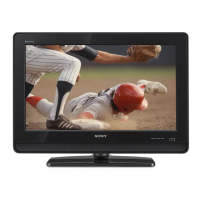
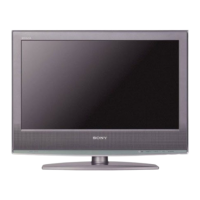
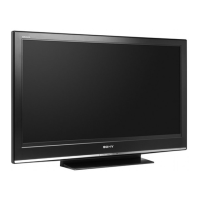
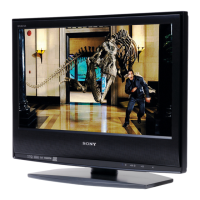
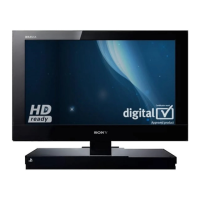
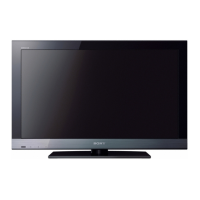
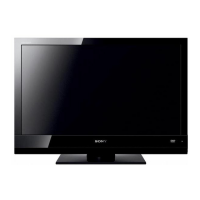



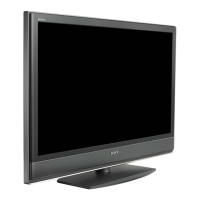
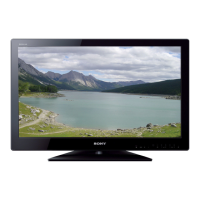
